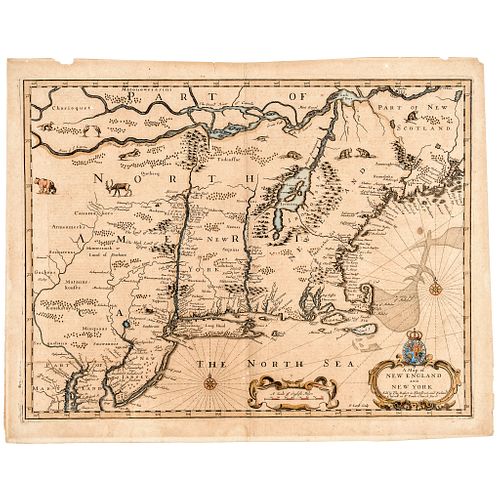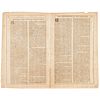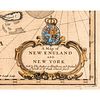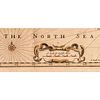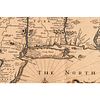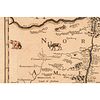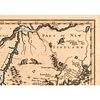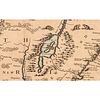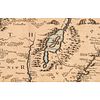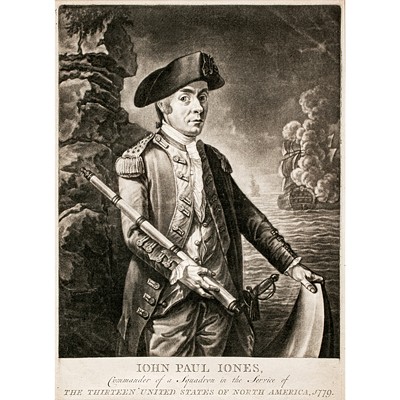c. 1676 Hand-Colored JOHN SPEED Engraved Map: A Map of New England and New York
Lot 298
Categories
Estimate:
$6,000 - $9,000
Absentee vs Live bid
Two ways to bid:
- Leave a max absentee bid and the platform will bid on your behalf up to your maximum bid during the live auction.
- Bid live during the auction and your bids will be submitted real-time to the auctioneer.
Bid Increments
| Price | Bid Increment |
|---|---|
| $0 | $10 |
| $200 | $20 |
| $300 | $25 |
| $500 | $50 |
| $1,000 | $100 |
| $2,000 | $200 |
| $3,000 | $250 |
| $5,000 | $500 |
| $10,000 | $1,000 |
| $20,000 | $2,000 |
| $30,000 | $2,500 |
| $50,000 | $5,000 |
| $100,000 | $10,000 |
| $200,000 | $20,000 |
| $300,000 | $25,000 |
| $500,000 | $50,000 |
About Auction
By Early American History Auctions
Jan 23, 2021
Set Reminder
2021-01-23 12:00:00
2021-01-23 12:00:00
America/New_York
Bidsquare
Bidsquare : Early American History Auction of Autographs, Americana, Political & Maps
https://www.bidsquare.com/auctions/early-american-history-auctions/early-american-history-auction-of-autographs-americana-political-maps-6311
311 Lots of Rare, Historic Autographs, Americana, Civil War Era, George Washington, Abraham Lincoln, Slavery & Black History, Revolutionary War Era, Colonial America, Federal Period, War of 1812, Colonial Currency, Indian Peace Medals & more... Early American History Auctions auctions@earlyamerican.com
311 Lots of Rare, Historic Autographs, Americana, Civil War Era, George Washington, Abraham Lincoln, Slavery & Black History, Revolutionary War Era, Colonial America, Federal Period, War of 1812, Colonial Currency, Indian Peace Medals & more... Early American History Auctions auctions@earlyamerican.com
- Lot Description
Historic Maps
c. 1676 John Speed "A Map of New England and New York" Hand-Colored Copper Plate Decorative Engraved Map
c. 1676, Original Hand-Colored, Classic Copper Plate Engraved Map titled, "A Map of New England and New York" engraved by John Speed, Very Fine.
An important rare, highly Decorative Ornate Map is luxuriously embellished with Original Hand-Color including its title and large margins, measuring about 21.5" x 17". This Map is even in light tone with a couple trivial chips in the top edge selvage nowhere near any print and would be hidden when framed. Double-Sheet, printed on proper heavy period laid paper. John Speed, the leading London cartographer of the Baroque period devised his interpretation of the Jansson-Visscher sequence of New England and New York Maps shortly after the English managed to definitively supplant the Dutch from control of New York and New Jersey, both provinces being renamed after British places. The major settlements of Boston, New Plymouth (Massachusetts), New York, New Castle (Delaware), New Haven, Stamford (Connecticut), and Ft. Orange (modern Albany) are named; however, this Map predates the founding of Philadelphia in 1682.
The outline of coastal New England is based on the work of earlier English cartographers, the most prominent being Captain John Smith. Long Island, the Hudson Valley, New Jersey and the Delaware Basin are based on Dutch sea charts. Speed advanced his portrayal of the head of Chesapeake Bay and the delineation of the Susquehanna River from earlier maps in the sequence, taking into account the latest English information. Curiously, the interior of the region outside of the Hudson and Connecticut Valleys is shown to be wildly misunderstood. The native tribes that occupied the interior and the French, who controlled the St. Lawrence Valley (Quebec) to the north, generally did not express pleasure upon encountering foreign explorers, and this ensured that very little information regarding these regions was available to either English or Dutch cartographers. Lake Champlain or the "Lake of Irocoisiensis" is located far to the east of its true location and the delineation of the St. Lawrence River is based on pure speculation.
The enigmatic interior is, however, graced by the finely-engraved presence of woodland animals, such as a Bear, a Deer, an Otter and several Beavers. The title Cartouche in the lower right is elegantly surmounted by the Royal Arms of England. We have located a similar example that is dealer offered, slightly brighter, currently offered at a retail price of $12,000. An important classic example during the early Mapping of America that is very pleasing for display. References: Campbell, "The Jansson-Visscher Maps of New England," 23; in Tooley, Mapping of America, pp. 290-291; McCorkle, Early Printed Maps of New England, 676.6.
- Shipping Info
-
Early American provides in-house worldwide shipping. Please contact us directly if you have questions about your specific shipping requirements.
-
- Buyer's Premium



 EUR
EUR CAD
CAD AUD
AUD GBP
GBP MXN
MXN HKD
HKD CNY
CNY MYR
MYR SEK
SEK SGD
SGD CHF
CHF THB
THB